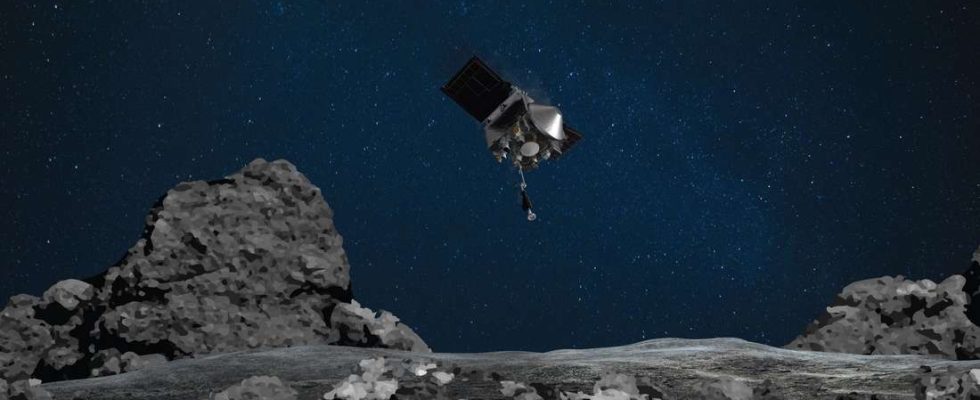The removal of the sample from the asteroid Bennu was already spectacular – now it is to be brought back just as spectacularly. Dropped by the “Osiris-Rex” probe, the capsule is intended to land in the Utah desert.
Salt Lake City – The NASA probe “Osiris-Rex” is scheduled to drop a sample from the asteroid Bennu over the desert of the US state of Utah today. According to NASA estimates, the capsule contains around 250 grams of rubble that was collected from the celestial body around three years ago. It will leave the probe around 102,000 kilometers above Earth.
Protected by a heat shield, the capsule will then enter the Earth’s atmosphere (around 4:42 p.m. CEST) and touch down around 13 minutes later with the help of parachutes in an area measuring approximately 58 by 14 kilometers. After landing, it will be taken to NASA laboratories in the US state of Texas for examinations – where around 200 scientists will then work on the sample using 60 different examination methods.
If everything works out, it would be the first sample of an asteroid successfully brought to Earth in NASA’s history – and probably the largest such sample ever taken. In 2005, the Japanese space probe “Hayabusa” landed on an asteroid. In 2010, it brought the first soil samples ever collected from such a celestial body to Earth. There have been other flights to asteroids, but no other probe has yet brought material back to Earth.
Taking the sample didn’t go completely smoothly
“Osiris Rex” (the abbreviation stands for: Origins, Spectral Interpretation, Resource Identification, Security-Regolith Explorer) was launched from the Cape Canaveral spaceport in September 2016 and arrived at Bennu around two years later. In October 2020, the probe took a sample from the asteroid in a complicated maneuver lasting several hours – the first US missile in space history.
A mishap also occurred: the lid of the collecting container was slightly pried open by larger stones, allowing parts of the sample to escape. The NASA scientists still assume that there is enough material in the collecting container. “We’ve been waiting for this for quite a long time now,” said NASA scientist Lori Glaze at a press conference on Friday.
Bennu is one of the most dangerous asteroids
The deep black Bennu, named after an ancient Egyptian deity, has a diameter of around 550 meters and could come quite close to Earth in a good 150 years. Even if the risk of impact is very low, NASA counts Bennu as one of the most dangerous asteroids currently known – and therefore wants to research it in detail. The scientists also hope that the “Osiris-Rex” mission, which costs around one billion dollars, will provide insights into the formation of the solar system more than 4.5 billion years ago, because asteroids are remnants of it.
The “Osiris-Rex” probe, which is approximately six meters long and weighs 2,100 kilograms, is supposed to make its way to the next asteroid, Apophis, immediately after being dropped. According to calculations, the asteroid with a diameter of around 370 meters will fly past Earth at a distance of around 32,000 kilometers in 2029 and could therefore be studied up close for the first time. The mission had already been extended by at least nine years – and then also has a new name: “Osiris Apex”. dpa

